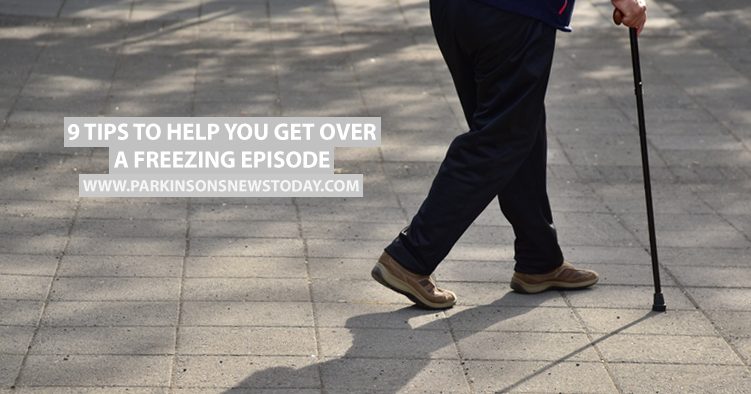9 Tips to Help You Get Over a Freezing Episode

It’s estimated that around a third of people living with Parkinson’s disease experience “freezing” from time to time. “Freezing” often happens when patients are walking and suddenly change direction or while raising the foot to go up a step, but it can also affect arm movements and even speech. Freezing can lead to falls and contribute to loss of mobility.
While it may not be possible to avoid freezing incidents altogether, there are ways to quickly overcome the episodes according to the American Parkinson’s Disease Association.
Change direction
If you freeze while moving forward, try moving to the side or backward for a couple of steps.
Move differently
Point to the ceiling or touch your nose — just doing something different from the original movement should be enough to break the freezing.
Use a laser pointer
A laser pointer can be useful to help you quickly overcome freezing, pointing the laser in front of your foot and then standing on the laser spot will usually do the trick.
MORE: What is “freezing” in Parkinson’s disease?
Step over something
You can either step over a crack on the sidewalk or visualize an item to physically step over.
Use a mini metronome
A mini, portable metronome is useful for providing a beat which can help you avoid freezing or get you started again.
Singing or humming
Singing or humming a song and then restarting in time with the beat can help break the freezing spell.
MORE: New Microsoft watch can quiet Parkinson’s tremors
Counting
Counting out a rhythm or saying “one, two, three, go” can help overcome freezing.
Shift your weight
Shifting your weight from side to side can often help you take that first step.
March
Marching up and down on the spot for a few moments can help restart your momentum.
MORE: 12 types of exercise suitable for Parkinson’s disease patients
Parkinsons’s News Today is strictly a news and information website about the disease. It does not provide medical advice, diagnosis or treatment. This content is not intended to be a substitute for professional medical advice, diagnosis, or treatment. Always seek the advice of your physician or another qualified health provider with any questions you may have regarding a medical condition. Never disregard professional medical advice or delay in seeking it because of something you have read on this website.






